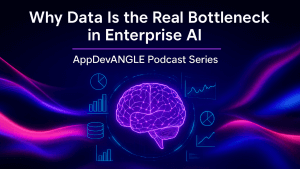The News
CloudBolt Software has released its latest CloudBolt Industry Insights (CII) report, Performance vs. Perception: The FinOps Execution Gap. Based on a Wakefield Research survey of 350 senior IT leaders, the report reveals a misalignment between perceived FinOps maturity and actual execution capabilities—especially in Kubernetes cost optimization and cloud ROI tracking.
To read more, visit the press release here.
Analysis
Cloud Complexity Outpaces Operational FinOps Maturity
As enterprises scale cloud-native architectures, FinOps maturity is becoming a determinant of ROI. Yet despite the growing influence of the FinOps Foundation and increased automation tooling, many organizations are struggling to deliver measurable outcomes. According to theCUBE Research, application modernization is driving a shift toward distributed, containerized environments that demand new cost visibility standards. As stated in the report, 78% of leaders admitting difficulty in consistently demonstrating cloud ROI, which underscores that adoption alone does not equate to optimization. Developer-led teams are central to cloud cost control, but are often under-equipped with the telemetry and governance needed to make informed decisions.
Report Highlights a Developer-Centric Visibility and Action Gap
The research shows that 98% of leaders agree Kubernetes is driving cloud spend, but 91% still cannot effectively optimize their clusters. This presents a developer-centric challenge: container sprawl and short-term resource consumption are nearly invisible to traditional cost analysis workflows. While 66% of respondents report mostly to fully automated environments, 58% still require weeks or months to detect and remediate waste. These lags point to broken feedback loops between cost observability, tagging discipline, and engineering execution. For developers building on Kubernetes and managing AI pipelines, this disconnect can affect everything from autoscaling to model inference cost optimization.
Developers have historically used post-hoc cloud reports, custom scripts, and inconsistent tagging standards to try to understand their cost profile. While platform teams may provision dashboards, engineers often operate without real-time access to actionable cost data tied to their specific services. Siloed tooling and limited cross-team accountability have made it difficult to link resource usage to business outcomes. The result has been reactive cost management, where inefficiencies are only identified after invoices arrive or budgets are exceeded. These legacy practices may fall short in meeting the demands of today’s dynamic workloads and cross-cloud operations.
Operationalizing FinOps Requires New Developer Workflow Integration
Going forward, the findings suggest developers could integrate FinOps principles directly into CI/CD pipelines, Kubernetes manifests, and platform observability layers. Proactive governance through policy-as-code, cost-aware autoscaling, and real-time anomaly detection will be essential. Developers should not only have access to spend data, but also the ability to act on it with sufficient context and automation.
Looking Ahead
The rise of AI, multi-cloud, and container orchestration continues to reshape cloud economics. As developer velocity accelerates, cost governance must evolve in lockstep. The FinOps execution gap highlighted in CloudBolt’s report signals a broader shift: from visibility to action, from tagging to telemetry, and from silos to platform-aligned collaboration. Developer-centric FinOps may become a defining capability in modern software delivery pipelines.
CloudBolt’s findings suggest that hybrid cloud management and AI/ML cost optimization are now top priorities for enterprise IT, and developers will be at the center of both. If organizations move beyond surface-level maturity claims and invest in continuous optimization, automated enforcement, and developer empowerment, the FinOps discipline could become a catalyst for both cost savings and innovation. It is possible to expect more engineering teams to adopt FinOps-as-code frameworks and invest in unified observability platforms that marry performance metrics with business impact.



